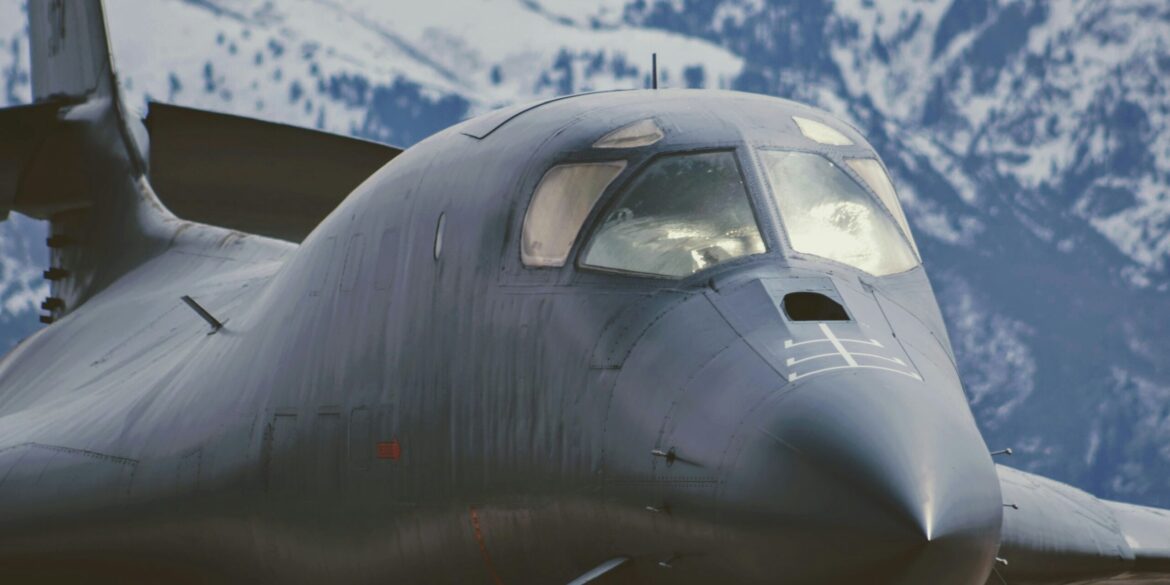A near-collision earlier this month between a SkyWest commuter jet and a U.S. Air Force B‑52 bomber is drawing national attention—not for what went wrong, but for what went right. An advanced artificial intelligence system, now in trial deployment across select air traffic control sectors, played a pivotal role in alerting human controllers to a potential in-air conflict, enabling them to issue swift instructions that prevented disaster.
The incident occurred on July 18 as SkyWest flight 3788, a regional carrier operating under the Delta Connection brand, was en route from Minneapolis–Saint Paul International Airport to Minot, North Dakota. The commercial Embraer E175 aircraft was beginning its final descent into Minot International Airport when it suddenly encountered a U.S. Air Force B-52 bomber operating in the same airspace. According to pilot accounts and FAA documentation, the SkyWest crew executed a rapid evasive maneuver—described by one passenger as “an abrupt, banking swerve”—to avoid coming dangerously close to the larger military aircraft.
While no physical contact occurred and passengers were unharmed, the proximity of the two aircraft raised alarms within both civilian aviation and military oversight circles. The B-52, it turns out, had not been in direct communication with Minot’s Class D tower—a facility that lacks radar capabilities and primarily depends on visual separation and controller-pilot coordination. With Minot Air Force Base located just miles away, military traffic is a known and frequent variable in the region’s airspace. However, in this case, delayed coordination and lack of radar contributed to the growing risk.
What changed the outcome was an artificial intelligence system now undergoing testing by the Federal Aviation Administration and developed in partnership with MIT Lincoln Laboratory. This AI tool is designed to scan real-time flight data and trajectory projections to detect and resolve potential conflicts between aircraft. Unlike traditional conflict alert systems, which rely heavily on vertical separation and are sometimes prone to false alarms, the new AI platform—known in development as ACAS X (Airborne Collision Avoidance System-X)—offers predictive modeling and can suggest both vertical and horizontal separation strategies.
In the case of the SkyWest–B-52 incident, the AI system flagged the converging paths several seconds before human controllers registered the conflict. It then relayed priority advisories to air traffic personnel, allowing them to quickly contact the SkyWest cockpit and redirect the aircraft’s descent vector. This intervention is credited with preserving the standard separation required by FAA protocols, averting what could have been a catastrophic mid-air encounter.
Federal officials have since confirmed that the event is under review, not due to any wrongdoing by the flight crews, but as a case study in how artificial intelligence can augment safety in increasingly complex airspace systems. An FAA spokesperson described the incident as a “powerful demonstration of what modern technology can contribute to our aviation infrastructure.” He added that the administration is now examining how to scale this AI capability for nationwide use, especially in areas with high military-civilian airspace overlap.
Experts in aviation safety note that integrating AI into air traffic control represents both a technological leap and a policy challenge. While current air traffic systems depend on human vigilance, radio coordination, and pilot situational awareness, AI can process thousands of data points in real time to make predictive risk assessments and propose optimal avoidance actions. The key, experts say, will be balancing automation with human oversight, ensuring that AI serves as a tool—not a replacement—for experienced professionals.
The incident also highlights long-standing issues in civil-military coordination in U.S. airspace. While both the Department of Defense and FAA maintain separate command chains and protocols, their airspace boundaries frequently intersect. As such, the SkyWest-B-52 close call may reignite discussions around shared flight tracking systems, dual-mode transponders, and joint communication protocols that could streamline awareness between civilian and military air operations.
Passengers aboard the SkyWest flight, many of whom were unaware of how narrowly the situation was averted, expressed gratitude for the professionalism of the crew and air traffic control. One traveler remarked afterward, “We felt the jolt and heard the captain’s calm voice saying we had to change course. We didn’t know it then, but that might’ve saved our lives.”
With no injuries and no damage, the event will likely serve as a case study in how AI, when paired with human decision-making, can raise safety standards in American aviation. As airspace grows more crowded—with commercial jets, private drones, and military operations often sharing the skies—the need for smart, proactive systems is becoming increasingly urgent.
The FAA’s ongoing analysis may pave the way for this AI tool to become a permanent fixture in control towers across the country, potentially ushering in a new era of air travel where machine learning and human expertise work hand-in-hand to prevent the next crisis before it begins.

